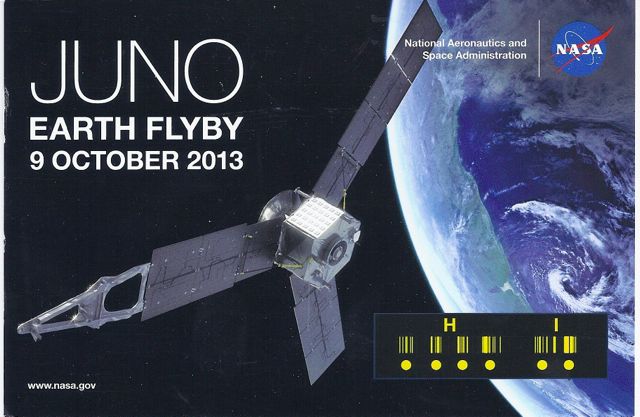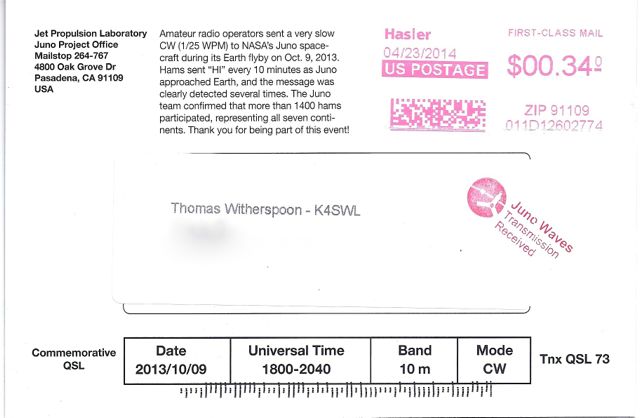SWLing Post readers might recall the Juno spacecraft we featured in a post dating back to October, 2013. During an Earth flyby, NASA invited ham radio operators around the world to say “HI” to Juno in a coordinated Morse Code message.
It was a unique opportunity for sure, and I made time to participate. NASA even followed up with a paper QSL card:
Juno is now reaching the insertion point of Jupiter and its true mission begins. According to NASA:
Juno’s primary goal is to improve our understanding of Jupiter’s formation and evolution. The spacecraft will investigate the planet’s origins, interior structure, deep atmosphere and magnetosphere. Juno’s study of Jupiter will help us to understand the history of our own solar system and provide new insight into how planetary systems form and develop in our galaxy and beyond.
Juno will have to withstand Jupiter’s intense radiation and gravity, and–though the craft was designed with this in mind–NASA reminds us that this is very much uncharted territory in space exploration.
Check out the following 360 video from NASA:
Click here to view on YouTube.
If you’d like to follow Juno’s progress, I encourage you to bookmark the Juno news page on NASA’s website.




Also, I’m excited for the maps! How close are these new Jupiter maps going to get? And what do you hope to do with them? Also, I’ve been hearing a lot about the 3D mapping capabilities of Juno’s instruments…what kinds of formats can we expect to see them in?
Actually, it won’t have to withstand Jupiter’s gravity at all. Juno is in free fall. Just like astronauts in orbit don’t feel the effect’s of Earth’s gravity, even though Earth’s gravity at the altitude of the ISS is still about 90% of what it is on the surface.